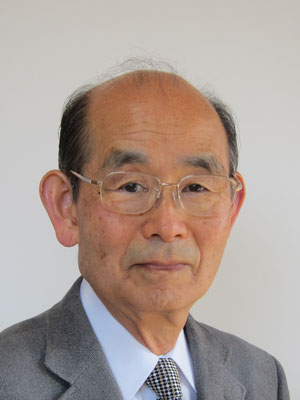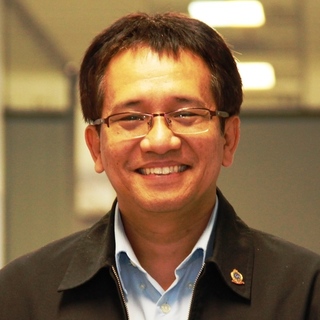The 2nd Deep Learning and Artificial Intelligence Winter School (DLAI2)
The concept of deep learning (DL) has been known in the neural network community for many years already. With the onset of more powerful computing facilities, especially the prevalence of graphical processing units (GPUs), DL has been applied successfully and effectively in many state-of-the-art applications including computer vision, speech recognition, object detection, drug discovery, and so on. DL basically uses deep neural network architecture with multiple layers to represent data with increasing abstraction and may be applied to supervised, unsupervised, as well as reinforcement learning. It is one of the fastest growing fields of AI research.
The Deep Learning and AI (DLAI) Winter School is catered to all interested students, engineers, researchers, and administrators who may have some basic knowledge of machine learning and AI. With the successful inaugural DLAI back on Feb 1-4, 2018, we are pleased to be able to offer the 2nd DLAI this year. The venue is at the Knowledge Exchange (KX) Building and the dates are on December 10-13, 2018. The Sixth Joint Symposium on Computational Intelligence (JSCI6), organized by the IEEE-CIS Thailand Chapter, as well as at least one Industry Session, will be held concurrently with DLAI.
As there may be limited seating available at the venue, priorities will be given to IEEE Members, APNNS Members, INNS Members, those who have made a submission to the collocated conferences IAIT2018 and CSBio2018, which are held during the same period, and paid registrants of DLAI. Several Public Sessions are available free to all, including IEEE-CIS Distinguished Lecture Talks and Workshops by Nvidia.
The DLAI Winter School will cover many aspects of deep learning with several talks by world-renowned researchers in form of lectures/tutorials/workshops and 2 panel sessions which will cover the most active current topics in DL and AI.
The proposed Panel Sessions:
1) Advances in Deep Learning - Capsule Network vs CNN vs RNN vs GAN.
2) AI and Brain-like Learning Systems - Alternate learning systems and shallow networks, etc.
The participants are invited to join in hackathon sessions with specific datasets. In fact, participants are encouraged to submit their dataset for consideration in one or more of the following hackathon themes:
1) Finance - Financial Engineering, FinTech, etc.
2) Biomedical and Biotechnology - Medical, Clinical, Health, Bioinformatics, Biopharmaceutical
3) Robotics/Machine Intelligence/Assistive Technologies - Computer Vision, Natural Language Processing, Speech Recognition, Machine Translation, etc.
4) The Web/Social Media/IoT/Cybersecurity
5) Education - MOOC, e-Learning, etc.
6) Industry - Manufacturing, Services, Processes such as CRM, SCM, etc.
7) Government and Societal Issues - Thailand 4.0, Environment, Climate, etc.
Date and Time
Location
Hosts
Registration
-
 Add Event to Calendar
Add Event to Calendar
- 110/1 Krung Thon Buri Road
- Bang Lamphu Lang, Thon Buri
- Bangkok, Bangkok Metropolis
- Thailand 10600
- Building: Knowledge Exchange (KX) Building
- Contact Event Host
- Co-sponsored by School of Information Technology, King Mongkut's University of Technology Thonburi
Speakers
 Prof. Kunihiko Fukushima of Fuzzy Logic Systems Institute, Iizuka, Fukuoka, Japan
Prof. Kunihiko Fukushima of Fuzzy Logic Systems Institute, Iizuka, Fukuoka, Japan
Deep CNN Neocognitron for Artificial Vision
Recently, deep convolutional neural networks (deep CNN) have become very popular in the field of visual pattern recognition. The neocognitron, which was first proposed by Fukushima (1979), is a network classified to this category. It is a hierarchical multi-layered
network. Its architecture was suggested by neurophysiological findings on the visual systems of mammals. It acquires the ability to recognize visual patterns robustly through learning.
Although the neocognitron has a long history, improvements of the network are still continuing. This talk discusses the recent neocognitron, focusing on differences from the conventional deep CNN.
Some other functions of the visual system can also be realized by networks extended from the neocognitron. For example, by adding top-down connections to the neocognitron, function of selective attention can be introduced. The ability of recognizing and completing partly occluded patterns can also be realized.
Biography:
Kunihiko Fukushima received a B.Eng. degree in electronics in 1958 and a Ph.D. degree in electrical engineering in 1966 from Kyoto University, Japan. He was a professor at Osaka University from 1989 to 1999, at the University of Electro-Communications from 1999 to 2001, at Tokyo University of Technology from 2001 to 2006; and a visiting professor at Kansai University from 2006 to 2010. Prior to his Professorship, he was a Senior Research Scientist at the NHK Science and Technology Research Laboratories. He is now a Senior Research Scientist at Fuzzy Logic Systems Institute (part-time position), and usually works at his home in Tokyo.
He received the Achievement Award, Distinguished Achievement and Contributions Award, and Excellent Paper Awards from IEICE; the Neural Networks Pioneer Award from IEEE; APNNA Outstanding Achievement Award; Excellent Paper Award, and Academic Award from JNNS; INNS Helmholtz Award; Pioneer Award from ELM2017; and so on. He was the founding President of JNNS (the Japanese Neural Network Society) and was a founding member on the Board of Governors of INNS (the International Neural Network Society). He is a former President of APNNA (the Asia-Pacific Neural Network Assembly).
He is one of the pioneers in the field of neural networks and has been engaged in modeling neural networks of the brain since 1965. His special interests lie in modeling neural networks of the higher brain functions, especially the mechanism of the visual system. In 1979, he invented "neocognitron ", which is a deep CNN (convolutional neural network) and acquires the ability to recognize visual patterns through learning. The extension of the neocognitron is still continuing. By the introduction of top-down connections and new learning methods, various kinds of neural networks have been developed. When two or more patterns are presented simultaneously, the "Selective Attention Model " can segment and recognize individual patterns intern by switching its attention. Even if a pattern is partially occluded by other objects, we human beings can often recognize the occluded pattern. An extended neocognitron can now have such human-like ability and can, not only recognize occluded patterns but also restore them by completing occluded contours. He also developed neural network models for extracting visual motion and optic flow, for extracting symmetry axis, and many others. He is recently interested in new learning rules for neural networks.
Address:Fuzzy Logic Systems Institute, , Iizuka, Fukuoka, Japan
 Prof. Teddy Mantoro of Faculty of Science and Technology Sampoerna University, Indonesia
Prof. Teddy Mantoro of Faculty of Science and Technology Sampoerna University, Indonesia
Computational Intelligence for Tracking User Location
User location can be considered as a key-driver factor in achieving a smarter lifestyle in our everyday user activity. User Location in a smart environment can be used to track indoor or outdoor computing environment. In tracking user location outdoor, the best practice is using GPS but for tracking user location indoor, the current best option is by applying computational intelligence using IEEE 802.11 (Wi-Fi) signals. Unfortunately, the Wi-Fi signals tend to fluctuate greatly (nearly 33% within 14-hour observations). This signal behavior makes the determination of descriptive and coordinate user location difficult. To solve this problem computational inteligence such as a. nk-Nearest Neighbor, b. Self-Organizing Map, c. Extreme Machine Learning, and d. Multivariate Regression are discussed. During the experiments, four
different multi-observers location were tested, in two different conditions (with and without disturbance). To extend from tracking, this presentation also explores the navigation for multiple dynamic objects or person by providing visualisation and navigation of multiple users
in 3D maps in 3D Walk-space for mobile users.
Biography:
Teddy Mantoro is a Computer Science Professor in Sampoerna University, Jakarta. His research interest is in Pervasive/Ubiquitous Computing, Wireless Sensor Network, Context-Aware Computing, Mobile Computing, and Intelligent Environment/IoT. He worked in Intelligent Environment which uses Computational Intelligence. He developed the concept and theory of Context-Aware Computing for Intelligent Environment, and as a proof of concept, his research team have developed many prototypes including a 'plug and play' Smart Home, HajjLocator (An Interactive Monitoring and Tracking System for Hajj Pilgrims), Rich Information Delivery Using Smart Posters, User Activity Recognition Using Hybrid Sensors, Online Authentication Using Smart Card and NFC, a Real-Time Speech News Service for Smart Environment, Visualization and User Navigation in 3D Walk-spaces for Mobile User which lead to many awards. He received 5 Gold, 9 Silver and 11 Bronze Medals (2009-now) for National and International IT Innovation Competitions. He has published more than 150 conference/journal papers (126 papers in Scopus, h-index=9). He has filed 4 (four) patents in credit to his name. He has received 20+ research grants to date. He is a Senior Member of IEEE. He obtained a PhD, an MSc and a BSc, all in Computer Science, and his PhD was awarded from School of Computer Science, the Australian National University (ANU), Canberra, Australia.
Address:Indonesia
Agenda
Can be found at https://deeplearningandaiwinterschool.github.io.
